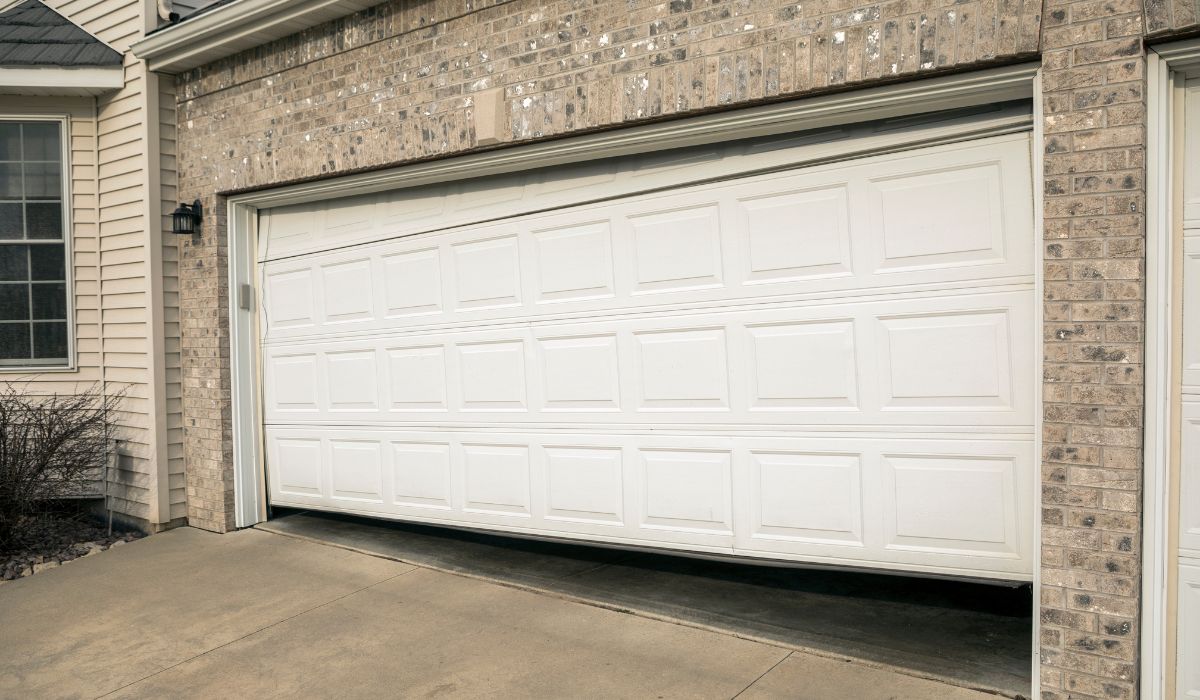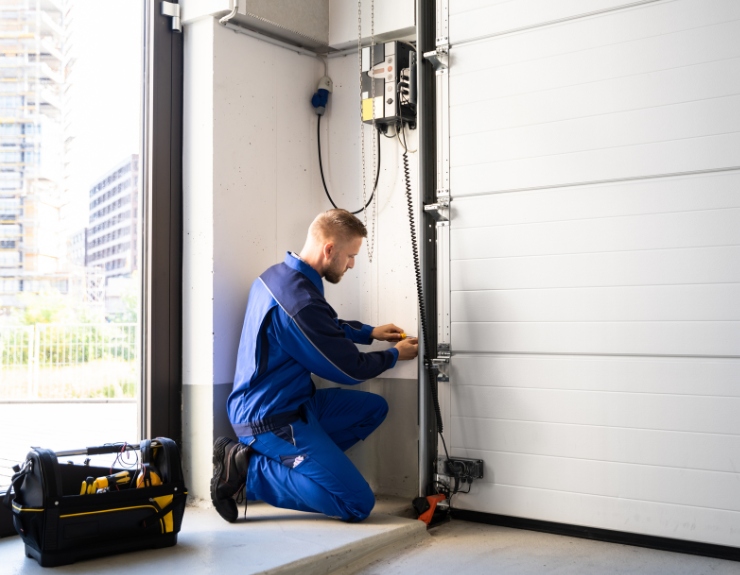A well-planned garage door maintenance schedule is key to ensuring your door operates safely, efficiently, and lasts for years. Whether you own a manual or automatic garage door, understanding the tasks involved in routine upkeep can prevent costly repairs, enhance safety, and maintain convenience. This comprehensive guide unpacks the essential components, timing, safety checks, and when to seek professional help—offering homeowners and property managers a clear, actionable roadmap for garage door preventive care.
What Are the Essential Components of a Garage Door Maintenance Schedule?
A thorough garage door maintenance schedule covers multiple critical components to keep the door balanced, responsive, and safe. Regular inspection and upkeep of these parts reduce wear and help avoid breakdowns.
- Garage Door Lubrication: Lubricate all moving parts including rollers, hinges, tracks, and springs to ensure smooth operation and reduce friction. Spring Inspection: Check the tension and physical condition of the springs, as worn or broken springs are common sources of door failure. Cable Check: Inspect cables for any signs of fraying or damage, which compromise door balance and safety. Roller Inspection: Evaluate rollers for smooth movement and wear; replace if they show cracks or don’t rotate freely. Hinge Inspection: Look for looseness or damage in hinges that connect door panels, tightening bolts as necessary. Bolt Tightening and Hardware Check: Garage door hardware can loosen over time—tighten bolts and examine brackets to maintain structural integrity. Cleaning Tracks and Panels: Remove dirt and debris from tracks and wipe down door panels to prevent obstruction and corrosion. Weatherstripping Condition: Assess weatherstripping for cracks or gaps and replace it to improve insulation and protect against moisture and pests.
Maintaining each component regularly supports door balance, prevents rust, and keeps the door operating quietly and safely.
How Often Should Each Garage Door Maintenance Task Be Performed?
A strategic schedule based on frequency helps homeowners prioritize tasks, balancing DIY efforts with professional inspections for optimal upkeep.
- Monthly Tasks: - Visual inspection of cables, rollers, and safety sensors for obvious damage or misalignment. - Test the auto-reverse function on automatic openers to verify safety mechanisms are operational. Quarterly Tasks: - Lubricate moving parts including rollers, hinges, tracks, and springs using a recommended lubricant. - Clean the tracks thoroughly to remove dust and debris. - Tighten bolts and check all hardware to prevent loosening caused by door motion. Biannual / Seasonal Checks: - Conduct detailed spring tension and condition inspection to catch wear early. - Test door balance by manually lifting halfway; it should hold position without falling or rising. - Clean and inspect weatherstripping to maintain insulation and seal integrity. Yearly Maintenance: - Schedule a professional full inspection and tune-up to identify and address hidden issues like opener programming or internal component wear. - Review door alignment and overall system function to extend longevity. Immediate Attention Indicators: - Unusual noises such as grinding or squeaking. - Door sticking, slow operation, or vibration during movement. - Safety sensor malfunction or emergency release problems.
Following this maintenance frequency balances the benefits of DIY preventive care with timely professional support to minimize emergency repairs.

What Type of Lubricant Is Recommended for Garage Door Maintenance?
Choosing the correct lubricant for garage door lubrication ensures components move freely without attracting grit that causes premature wear.
- Recommended Lubricants: Use silicone-based sprays or lithium grease for long-lasting lubrication that resists dust buildup and does not dry out quickly. Lubricants to Avoid: Stay clear of oil-based lubricants which tend to attract dirt and can gum up moving parts. Application Points: Focus lubrication on hinges, roller bearings, tracks, and torsion springs to reduce friction and noise. Suggested Tools: Precision spray cans with narrow nozzles make it easier to apply lubricant cleanly to tight spots. Keep cloths handy to wipe excess lubricant and prevent drips.
Proper garage door lubrication not only improves door operation but also prolongs hardware life by reducing wear and tear.
How Do Safety Features Factor Into a Garage Door Maintenance Schedule?
Regular testing and inspection of safety https://sites.google.com/view/garage-door-the-meadows-ab/ features protect your family and property by ensuring automatic doors respond correctly to obstacles and emergencies.
- Auto-Reverse Mechanism: Test monthly by placing an object under the door during closing; the door should reverse immediately to prevent accidents. Photo-Eye Sensors: Clean and verify alignment monthly to ensure sensors detect obstructions accurately. Manual Emergency Release: Operate the manual release to confirm smooth disengagement in case of power outages or malfunctions. Remote Controls and Opener Programming: Inspect remote control response and reset or reprogram openers if necessary to maintain security and convenience. Manufacturer’s Safety Protocols: Follow specific guidelines for your model to comply with safety standards and maintain warranty coverage.
Prioritizing these safety checks minimizes hazards and helps prevent injury or damage, a crucial part of preventative maintenance.

When Should You Consider Professional Garage Door Maintenance or Parts Replacement?
Certain issues demand specialized expertise and equipment to fix safely and effectively.
- Signs You Need a Professional: - Broken or severely worn springs are dangerous to handle without proper tools. - Bent or damaged tracks requiring realignment or replacement. - Doors that have come off their tracks or are frozen in place. - Persistent noise or vibration despite lubrication and hardware tightening. - Malfunctioning door opener that fails to respond correctly. Typical Costs: Professional maintenance varies by region and service scope but budgeting annually for inspection plus occasional parts replacement is wise. Benefits of Professional Service: Certified technicians provide thorough checks, precise adjustments, and can safely replace high-tension springs, cables, or electronic components. Emergency Situations: Immediate professional intervention is necessary for any signs of safety hazards or sudden door failures to avoid injury.
Timely professional involvement protects investment and ensures your door’s mechanical systems function reliably.
How Does a Garage Door Maintenance Schedule Improve Door Longevity and Safety?
Routine maintenance balances the door correctly, inspects and preserves critical components, and detects minor issues before they escalate.
- Balanced and Aligned Doors: Proper door balance reduces motor strain and wear on springs and cables, improving safety and extending component life. Preventive Care: Regular lubrication, tightening, and cleaning prevent sticking, slow operation, and broken springs which frequently stem from neglect. Early Detection: Scheduled general inspections catch potential problems like worn rollers, cable frays, or misaligned tracks before they cause failure or accidents. Reduced Emergency Repairs: Consistent upkeep lowers the risk of sudden breakdowns, which can disrupt daily routines and incur high repair costs.
An effective garage door upkeep schedule is an investment in peace of mind, safety, and minimizing unexpected expenses.
How to Create a DIY Garage Door Maintenance Checklist?
A personalized checklist helps homeowners perform regular maintenance confidently and safely.
- Step-by-step Template: 1. Visually inspect cables, rollers, and door panels for damage. 2. Test safety sensors and auto-reverse feature. 3. Clean tracks and remove debris. 4. Lubricate hinges, rollers, tracks, and springs. 5. Tighten loose bolts and hardware. 6. Check weatherstripping for wear and replace if necessary. 7. Manually test door balance and smooth operation. Safety Precautions: Always disconnect power to automatic openers before working on the door. Use gloves and eye protection when handling hardware or lubricants. Recommended Tools & Supplies: Wrench set, screwdriver, silicone-based lubricant spray, cleaning cloths, replacement weatherstripping, ladder, and safety glasses.
Following this structured approach simplifies maintenance tasks and ensures no critical step is overlooked.
What Are the Most Common Garage Door Problems Identified During Maintenance?
Recognizing symptoms early helps troubleshoot issues before they worsen.
- Noise Issues: Grinding, squeaking, or rattling often indicate worn rollers, dry lubrication, or loose hardware. Vibration or Shaking Door: Imbalanced door or damaged springs can cause unstable movement. Sticking Door or Slow Operation: Dirty tracks, lack of lubrication, or misaligned springs typically cause sluggish response. Broken Spring: Visible gaps or snapped springs require immediate professional replacement. Bent Track or Off-Track Door: Tracks that are bent or misaligned prevent smooth door travel and risk damage. Frozen Door: In cold climates, ice buildup can freeze door components; regular seasonal cleaning helps mitigate this.
When basic troubleshooting (cleaning, lubricating, tightening) doesn’t resolve the problem, consult a professional to avoid aggravating an issue or compromising safety.
Conclusion
A consistent garage door maintenance schedule is essential for safe, reliable door operation and cost-effective upkeep through 2025 and beyond. By incorporating regular lubrication, inspection of springs, cables, rollers, hardware tightening, and safety feature testing into your routine, you reduce wear and avoid unexpected breakdowns. While many tasks suit DIY enthusiasts armed with the right tools and safety gear, don’t hesitate to call professionals for complex repairs like spring replacement or track realignment. Ultimately, well-maintained garage doors not only protect your home and family but also ensure hassle-free performance for years to come. Start building your maintenance schedule today and enjoy peace of mind tomorrow.